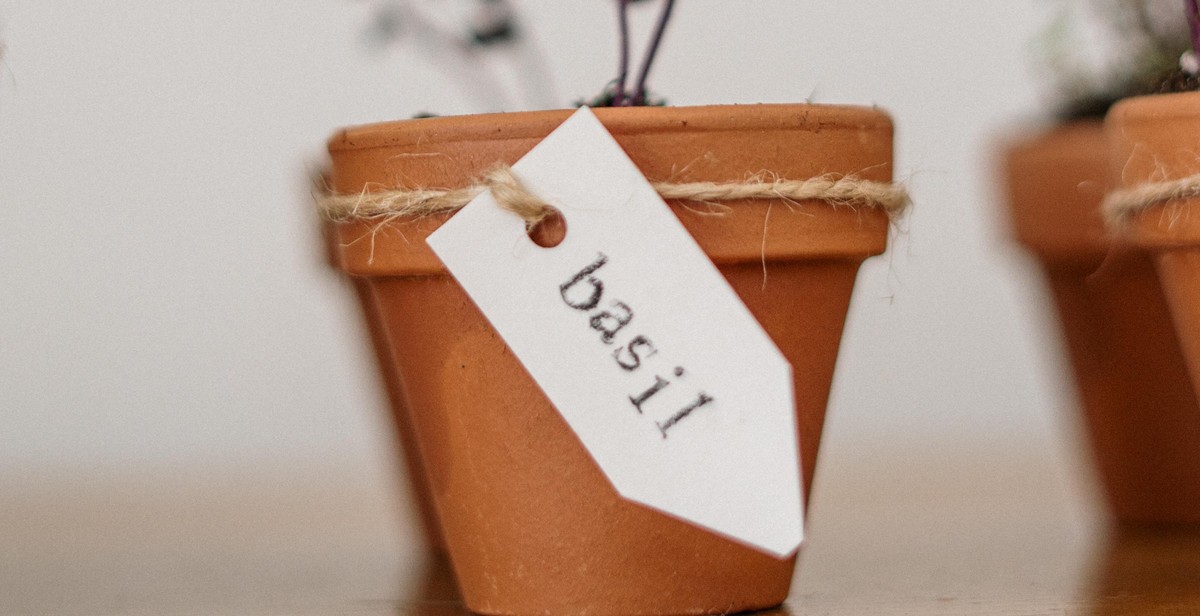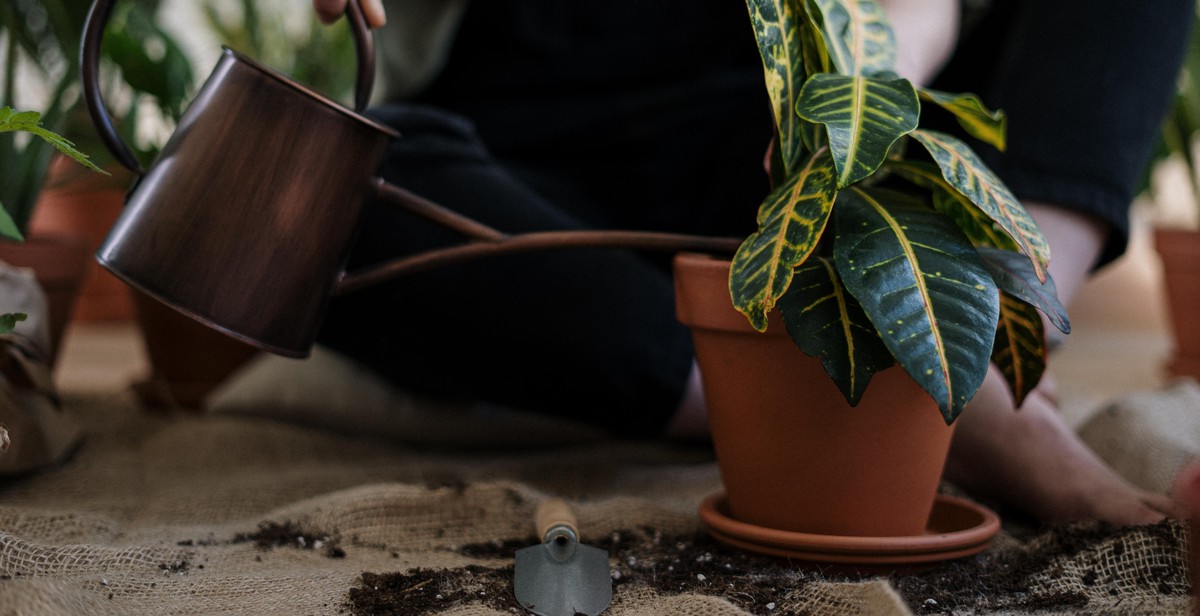How to Start a Vertical Herb Garden for Fresh Culinary Flavors
Herbs are an essential part of any good cook’s pantry. They add flavor, aroma, and color to dishes, and can turn even the most basic meal into a culinary masterpiece. But buying fresh herbs from the grocery store can be expensive, and they often wilt and spoil before you can use them all.
That’s where a vertical herb garden comes in. A vertical herb garden is a space-saving solution that allows you to grow your own herbs in a small amount of space. Whether you have a small balcony, a sunny windowsill, or a tiny backyard, you can create a vertical herb garden that will provide you with fresh herbs all year round.
Why Start a Vertical Herb Garden?
There are many reasons to start a vertical herb garden:
- Save money: Growing your own herbs is much cheaper than buying them from the grocery store.
- Convenience: With a vertical herb garden, you can have fresh herbs at your fingertips whenever you need them.
- Health benefits: Fresh herbs are packed with nutrients and antioxidants that can boost your health and wellbeing.
- Flavor: Fresh herbs have a much stronger and more complex flavor than dried herbs, adding depth and complexity to your dishes.
- Environmental benefits: Growing your own herbs reduces your carbon footprint and helps to promote sustainability.
With all these benefits, it’s easy to see why so many people are starting their own vertical herb gardens. In the following sections, we’ll show you how to get started with your own vertical herb garden, and provide tips and advice to help you grow healthy and delicious herbs at home.

Choosing the Right Location
When it comes to starting a vertical herb garden, choosing the right location is crucial for the success of your plants. The two most important factors to consider are sunlight requirements and access to water.
Sunlight Requirements
Most herbs require at least 6 hours of sunlight per day, so it is important to choose a location that gets plenty of direct sunlight. South-facing walls or balconies are ideal for vertical herb gardens as they receive the most sun exposure throughout the day. East-facing locations are also suitable as they receive morning sun, which is less intense and can be beneficial for some herbs.
Access to Water
As with any plant, herbs need regular watering to thrive. When choosing a location for your vertical herb garden, ensure that it is easily accessible to a water source. If you plan on using a drip irrigation system, make sure that the location is close enough to a water outlet or that you have a long enough hose to reach it. If you plan on hand-watering your herbs, make sure that the location is easily accessible with a watering can or hose.
| Sunlight Requirements | Access to Water |
|---|---|
| At least 6 hours of direct sunlight per day | Easily accessible to a water source |
| South-facing walls or balconies are ideal | Close enough to a water outlet or long enough hose |
| East-facing locations are also suitable | Easily accessible with a watering can or hose |
By taking into account the sunlight requirements and access to water, you can choose the perfect location for your vertical herb garden and ensure that your plants thrive.

Selecting the Right Herbs
When it comes to selecting the right herbs for your vertical herb garden, there are two main categories to consider: herbs for culinary use and herbs for medicinal use.
Herbs for Culinary Use
If you’re looking to add fresh and flavorful herbs to your cooking, consider planting some of these popular culinary herbs:
- Basil
- Cilantro
- Oregano
- Parsley
- Thyme
- Rosemary
- Mint
These herbs are not only delicious, but they also have health benefits. Basil is a good source of vitamin C and antioxidants. Cilantro can aid in digestion and has anti-inflammatory properties. Oregano has antimicrobial properties and may help boost the immune system.
Herbs for Medicinal Use
If you’re interested in using herbs for their medicinal properties, consider planting some of these herbs:
| Herb | Common Uses |
|---|---|
| Chamomile | Relaxation, sleep aid, digestive issues |
| Echinacea | Immune system support, cold and flu prevention |
| Lavender | Relaxation, stress relief, sleep aid |
| Peppermint | Indigestion, nausea, headaches |
| St. John’s Wort | Depression, anxiety, nerve pain |
It’s important to note that while herbs can have medicinal properties, they should not be used as a substitute for professional medical advice and treatment.
By selecting the right herbs for your vertical herb garden, you can enjoy fresh and flavorful culinary creations or explore the natural health benefits of medicinal herbs.

Preparing the Garden
Starting a vertical herb garden requires proper preparation of the garden. Here are some essential steps to follow:
Choosing the Right Container
The first step in preparing your garden is to choose the right container. You can use various types of containers, including pots, hanging baskets, and vertical planters. Ensure that the container is large enough to accommodate the herbs you want to grow. Also, consider the material of the container. Plastic, terra cotta, and ceramic containers are common choices. Ensure that the container has proper drainage to prevent waterlogging.
Choosing the Right Soil
The soil you use in your garden plays a crucial role in the growth and development of your herbs. Choose a high-quality potting mix that is rich in organic matter. Avoid using garden soil as it may contain pests and diseases that can harm your herbs. Additionally, ensure that the soil is well-draining to prevent waterlogging.
Fertilizing the Soil
Fertilizing the soil is essential to provide your herbs with the necessary nutrients for growth. Use a slow-release fertilizer or organic compost to enrich the soil. Follow the instructions on the fertilizer package to avoid over-fertilizing, which can harm your herbs.

Planting Your Herbs
Creating a successful vertical herb garden requires proper spacing and planting techniques. Here are some tips to help you get started:
Spacing
When planting herbs, it is important to consider their mature size and growth habit. Most herbs require at least 6 to 8 inches of space between each plant to allow for proper air circulation and prevent overcrowding. However, some herbs such as mint and oregano can quickly spread and may require up to 12 inches of space between each plant.
For vertical gardens, consider using a tiered system to maximize space and provide adequate room for each plant. You can also use hanging baskets or wall-mounted planters to create a vertical garden with minimal floor space.
Planting Technique
Before planting, make sure to prepare the soil by adding organic matter and fertilizer. Herbs prefer well-draining soil with a slightly acidic pH between 6.0 and 7.0.
When planting, gently remove the herb from its container and loosen the roots. Place the herb in the prepared hole so that the top of the root ball is level with the soil surface. Backfill the hole and gently firm the soil around the plant.
Water the newly planted herb thoroughly and continue to water regularly, keeping the soil moist but not waterlogged. Fertilize every 4-6 weeks with a balanced fertilizer to promote healthy growth.
By following these spacing and planting techniques, you can create a thriving vertical herb garden that will provide fresh culinary flavors all season long.

Maintaining Your Vertical Herb Garden
Starting a vertical herb garden is a great way to add fresh culinary flavors to your dishes, but maintaining it is equally important to ensure that your herbs stay healthy and tasty. Here are some tips to help you maintain your vertical herb garden:
Watering
Watering is crucial for the health of your herbs. Make sure to water your herbs regularly, but avoid overwatering as it can lead to root rot. The frequency of watering depends on the type of herbs and the weather conditions. It’s best to water your herbs in the morning or evening to avoid evaporation and to prevent the leaves from burning in direct sunlight.
Pruning
Pruning is essential to keep your herbs healthy and to encourage new growth. Regular pruning helps to prevent overcrowding and ensures that your herbs have enough space to grow. It also helps to promote bushier and more flavorful plants. Always use sharp and clean pruning shears to avoid damaging the stems and leaves of your herbs.
Pest Control
Pests like aphids, spider mites, and whiteflies can damage your herbs. To prevent infestations, regularly inspect your herbs for any signs of pest damage. If you notice any pests, remove them by hand or use a natural pest control method like neem oil or insecticidal soap. Avoid using chemical pesticides as they can be harmful to your herbs and the environment.
By following these tips, you can maintain your vertical herb garden and enjoy fresh and flavorful herbs all year round.

Harvesting Your Herbs
Timing is crucial when it comes to harvesting your herbs. You should always wait until the plants are mature enough before harvesting them. Most herbs are best harvested just before they flower, as this is when they are at their peak flavor and aroma.
Harvesting Technique
The way you harvest your herbs will depend on the type of herb you are growing. Here are some general guidelines:
- Leafy herbs such as basil, mint, and parsley should be harvested by snipping off the leaves with a sharp pair of scissors or pruning shears. Be sure to only take a few leaves from each stem at a time, to avoid damaging the plant.
- Woody herbs such as rosemary, thyme, and oregano should be harvested by cutting off whole stems. Again, be sure to only take a few stems from each plant at a time.
- Root herbs such as ginger and turmeric should be harvested by digging up the entire plant. This should be done at the end of the growing season.
After harvesting your herbs, be sure to wash them thoroughly and dry them completely before using them. You can store them in the refrigerator for a few days, or freeze them for longer storage.
| Tip | Description |
|---|---|
| Harvest in the morning | Herbs are best harvested in the morning, after the dew has evaporated but before the sun gets too hot. |
| Don’t over-harvest | Be sure to only take what you need, and leave enough leaves on the plant so that it can continue to grow. |
| Harvest regularly | Regular harvesting encourages the plant to produce more leaves, which means more flavor for you! |

Conclusion
Starting a vertical herb garden is a fun and rewarding way to add fresh culinary flavors to your cooking. With the right tools, materials, and a bit of patience, you can grow a variety of herbs in a small space and enjoy the fruits of your labor.
Benefits of a Vertical Herb Garden
- Save space
- Easy to maintain
- Enhance your cooking
- Improve air quality
- Add beauty to your home
By following the tips and techniques outlined in this article, you can create a thriving vertical herb garden that provides fresh herbs all year round. Remember to choose the right location, provide adequate light and water, and use quality soil and fertilizers. With these basic principles in mind, you can create a beautiful and functional garden that enhances your culinary creations and brings joy to your daily life.
